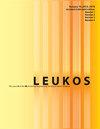On the Relation between the Astronomical and Visual Photometric Systems in Specifying the Brightness of the Night Sky for Mesopically Adapted Observers
IF 2.6
2区 工程技术
Q2 CONSTRUCTION & BUILDING TECHNOLOGY
引用次数: 6
Abstract
ABSTRACT Due to the typical ambient light levels in inhabited places and light pollution of the night sky, most naked-eye astronomical observations are performed nowadays under mesopic conditions. The luminance (cd/m2) associated with the brightness of the night sky specified in the astronomical logarithmic scale of magnitudes per square arcsecond (mag/arcsec2) is strongly dependent on the spectrum of the sky, because the spectral sensitivity of the human visual system is not coincident with the standard photometric bands used in astronomy. The conversion between these two families of photometric systems was previously analyzed for observers presumed to be either fully photopically or scotopically adapted. In this work, we deduce the transformation equations between the astronomical and visual photometric systems for specifying and reporting the sky brightness in the mesopic range, within the framework of the MES-2 system for visual performance-based mesopic photometry. It is shown that the dependence of the conversion factors on the correlated color temperature of the night sky reaches a minimum spread for adaptation luminances of 0.5–1.0 cd/m2. The sky luminances corresponding to 22.0 mag/arcsec2 in the Johnson-Cousins V band (the assumed brightness of a natural night sky devoid of light pollution) span, for 1.0 cd/m2 adaptation, a relatively small range of ~195–215 μcd/m2 in the absolute (AB) magnitude system and ~210–225 μcd/m2 in the Vega-referenced one.天文测光系统与视觉测光系统在中观观测者确定夜空亮度中的关系
由于人类居住地区的典型环境光水平和夜空的光污染,目前大多数的裸眼天文观测都是在介观条件下进行的。与夜空亮度相关的亮度(cd/m2)在天文对数尺度每平方角秒(mag/arcsec2)中规定,强烈依赖于天空的光谱,因为人类视觉系统的光谱灵敏度与天文学中使用的标准光度带不一致。这两个家族的光度系统之间的转换,以前分析了观察者被认为要么是完全的光学或局部适应。在本文中,我们在基于视觉性能的mes2介观光度系统的框架内,推导了用于指定和报告介观范围内天空亮度的天文和视觉光度系统之间的转换方程。结果表明,当适应亮度为0.5 ~ 1.0 cd/m2时,转换因子对夜空相关色温的依赖达到最小。在Johnson-Cousins V波段(假设无光污染的自然夜空亮度)对应的天空亮度范围为22.0 mag/arcsec2,适用于1.0 cd/m2,在绝对(AB)系统中为~195 ~ 215 μcd/m2,在vega参考系统中为~210 ~ 225 μcd/m2。
本文章由计算机程序翻译,如有差异,请以英文原文为准。
求助全文
约1分钟内获得全文
求助全文
来源期刊

Leukos
工程技术-光学
CiteScore
7.60
自引率
5.60%
发文量
19
审稿时长
>12 weeks
期刊介绍:
The Illuminating Engineering Society of North America and our publisher Taylor & Francis make every effort to ensure the accuracy of all the information (the "Content") contained in our publications. However, The Illuminating Engineering Society of North America and our publisher Taylor & Francis, our agents, and our licensors make no representations or warranties whatsoever as to the accuracy, completeness, or suitability for any purpose of the Content. Any opinions and views expressed in this publication are the opinions and views of the authors, and are not the views of or endorsed by The Illuminating Engineering Society of North America and our publisher Taylor & Francis. The accuracy of the Content should not be relied upon and should be independently verified with primary sources of information. The Illuminating Engineering Society of North America and our publisher Taylor & Francis shall not be liable for any losses, actions, claims, proceedings, demands, costs, expenses, damages, and other liabilities whatsoever or howsoever caused arising directly or indirectly in connection with, in relation to, or arising out of the use of the Content. Terms & Conditions of access and use can be found at http://www.tandfonline.com/page/terms-and-conditions .
 求助内容:
求助内容: 应助结果提醒方式:
应助结果提醒方式:


